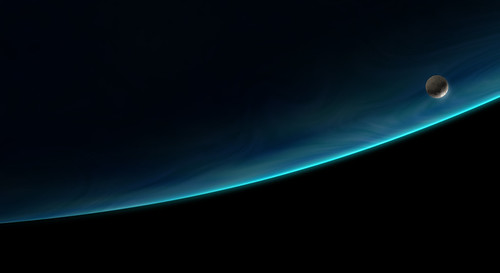
That’s no moon! — Researchers argue back and forth about whether weve spotted an exomoon Years after Kepler shut down, people are arguing over whether it spotted exomoons.
Ivan Paul – Dec 26, 2023 8:10 pm UTC EnlargeNASA reader comments 40
In 2017, the astronomy world was abuzz at the announcement that exoplanet Kepler-1625b potentially had its own moonan exomoon. This was the first hint anyone had seen of an exomoon, and was followed five years later by another candidate around the planet Kepler-1708b.
There are over five thousand exoplanets discovered so far, and we dont know for certain whether any have moons orbiting, which is what made these announcements so exciting. Exomoons provide more potentially habitable areas in which we can search for extraterrestrial life, and the study of moons can be a valuable window into the formation of the host planet.
But there has been much debate about these exomoon candidates, with multiple groups combing through the data obtained from the Kepler and Hubble space telescopes.
The most recent paper on the topic, published by astronomers in Germany, has come to the conclusion that the exomoon candidates around Kepler-1625b and Kepler-1708b are unlikely. Previous work has also cast doubt on the exomoon candidate around Kepler-1625b.
This is not a clear cut case, though. David Kipping, the leader of the group that made both original discoveries, and assistant professor of astronomy at Columbia University, disagrees with the new analysis. He and his group are in the process of preparing a manuscript that responds to the latest publication. A needle in a haystack
The most common method of detecting exoplanets is the transit method. This technique measures the brightness of a star, and looks for a small dip in brightness that corresponds to a planet transiting in front of the star.
Stellar photometry can be extended to look for exomoons, an approach pioneered by Kipping. As well as the main dip caused by the planet, if a moon is orbiting the planet you should be able to see an additional, smaller dip caused by the moon also shielding some of the stars light. Advertisement An example of what a transit detection of an exomoon might look like.
As moons are smaller they generate a smaller signal, making them more challenging to spot. But what makes this particular case even more challenging is that the host stars Kepler-1625 and Kepler-1708 arent that bright. This makes the light dip even fainterin fact these systems have to have large moons to be within the threshold of what the Kepler space telescope can detect. Models, models, models
Until scientists get more data from James Webb, or future missions such as ESAs PLATO launch, its all down to what they can do with the existing numbers.
The aspects here that are relevant are how the data itself is processed, what physics you put in when you’re modelling that data, and then what possible false positive signals might be out there that could reproduce the sort of signal that you’re looking for, Eamonn Kerins, senior lecturer in astronomy at the University of Manchester who was not involved with the study, told Ars. I think this whole debate centers around those questions essentially, he added.
One key phenomenon that needs accurate modelling is known as the stellar limb darkening effect. Stars, including our Sun, appear dimmer at their edge than at the centre due to effects of the stellar atmosphere. As this affects the apparent brightness of the star, its clearly important to understand in the context of searching for exomoons by measuring a stars brightness.
We have models for this, but we don’t really know exactly how a specific star behaves in terms of this stellar limb darkening effect, said Ren Heller, lead author of the study and astrophysicist at the Max Planck Institute for Solar System Research, in an interview for Ars. How specific stars behave can be deduced, but this isnt always trivial. By including improved models for stellar limb darkening, the authors found that they can explain signals previously attributed to an exomoon. Advertisement
Data processing is also paramount, especially a type of processing known as detrending. This takes into account long-term variability in the brightness data that is caused by random stellar variation and instrument variability, among other things. The new research shows that the statistical outcome, moon or no moon, is extremely dependent on how you carry out this detrending.
Whats more, the authors say that the data obtained from the Hubble telescope, which is primarily where the claim for the moon around Kepler-1625b comes from, cant be properly detrended and thus shouldnt be relied on for exomoon searches. Two sides
Until more data is obtained, this is likely to remain an ongoing scientific discussion with no definitive conclusion.
Kerins points out that Kipping and his team have been very measured in their announcements. They’re very, very careful to not claim it as a cast-iron detection. They’ve done comprehensive testing of the data they’ve been given, and really I think the difference here is all about what physics you put in, how you process the data, and ultimately the fact that the Kepler data set is really on the edge of finding exomoons.
Heller, though, remains unconvinced. My impression is that in the Kepler data, we and also other teams have done what’s currently possible and there’s no compelling object that really sticks out.
Moons far outnumber planets in our own Solar Systemtwo hundred and ninety to eight to dateso its reasonable to assume that we will come across exomoons as we continue exploring the skies. It would be quite extraordinary, I think, if we continue to go over the next few years and not find an exomoon, said Kerins. I think it can only be a matter of time.
Nature Astronomy, 2023. DOI: 10.1038/s41550-023-02148-w
Ivan Paul is a freelance writer based in the UK, finishing his PhD in cancer research. He is on Twitter @ivan_paul_. reader comments 40 Advertisement Channel Ars Technica ← Previous story Next story → Related Stories Today on Ars





